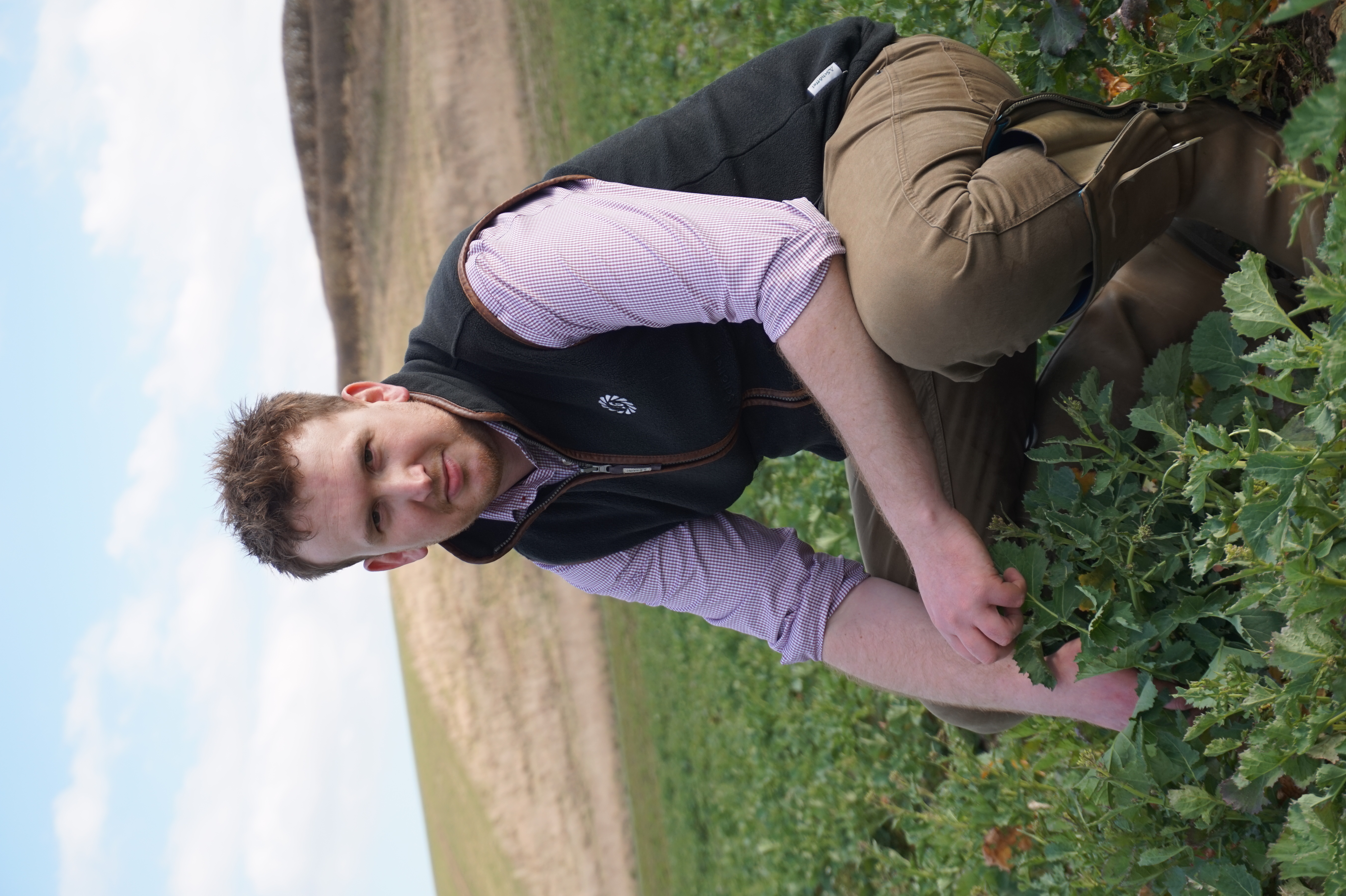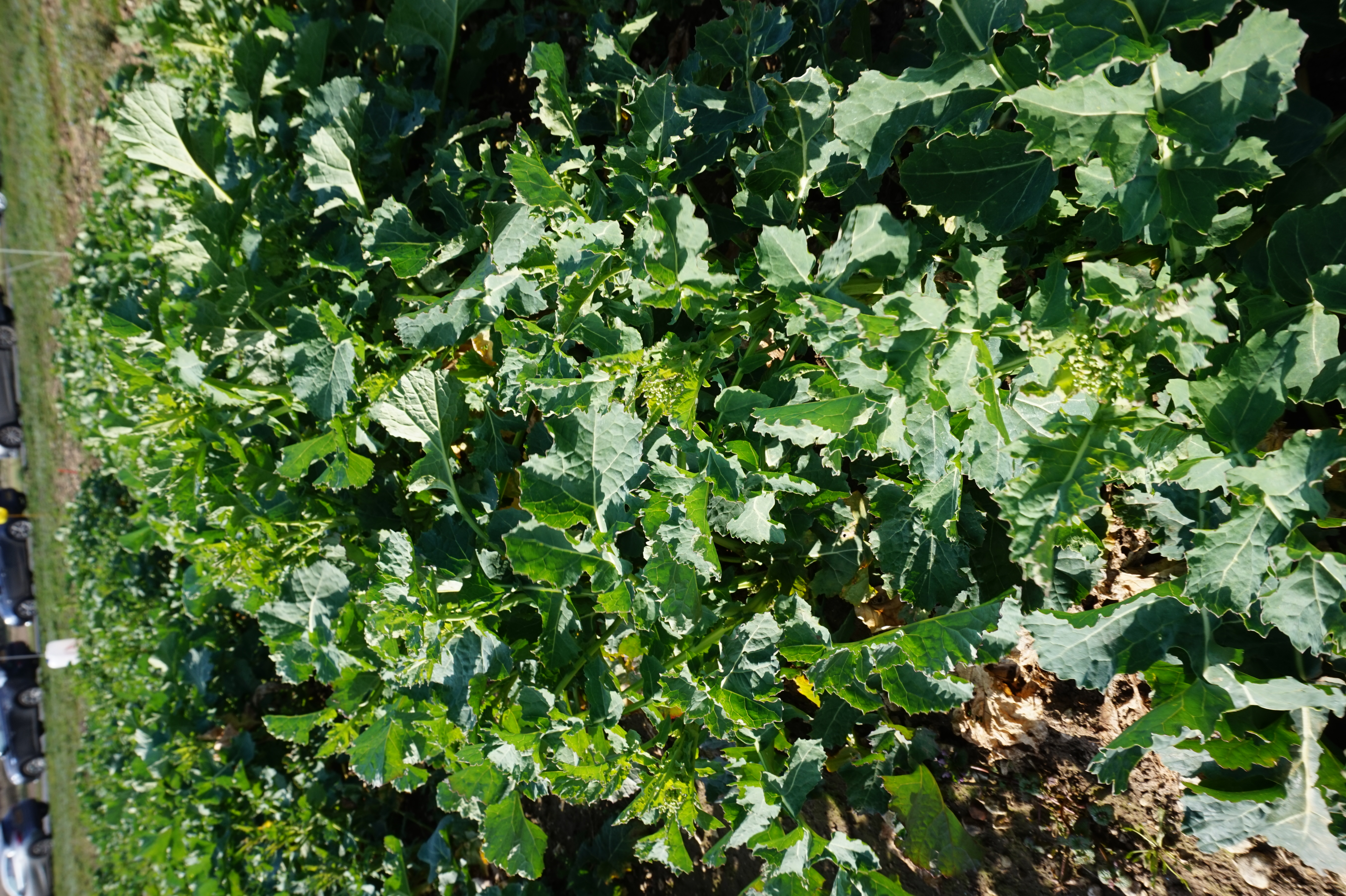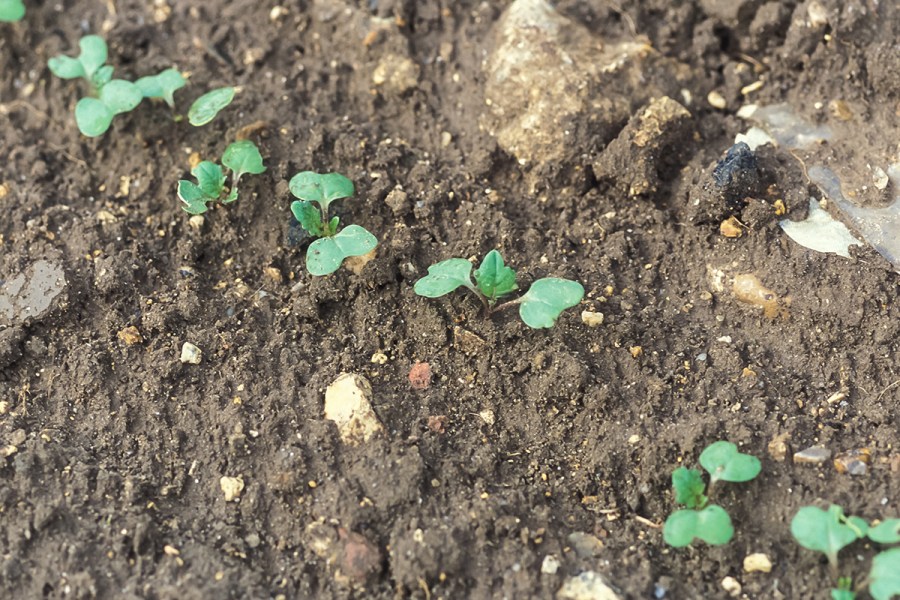With the current oilseed rape prices at an all-time high, it’s more important than ever the crop gets the best possible start. CPM reports from a webinar where industry experts gave tips on how to get the crop away.
With no official rating for vigour its measurement is very subjective, and it shouldn’t be confused with biomass.
Oilseed rape can’t be grown in the same way it used to be, says Limagrain’s OSR specialist Liam Wilkinson, as he opens a recent webinar hosted by the company.
“With the loss of so much of our chemical armoury, pests and diseases have become increasingly difficult to control. Today, it’s cultural methods of control, which includes cultivations, genetics and agronomics, that are key to an OSR crop’s establishment and yield success,” he says.
“OSR breeding has advanced in leaps and bounds and represents the most genetic progress in any arable crop. Sixteen years ago, the first hybrid came on to the market – fast forward to 2022 and hybrids dominate as a result of their trait loaded offering, along with robust agronomic characteristics.”

OSR breeding has advanced in leaps and bounds and represents the most genetic progress in any arable crop, claims Liam Wilkinson.
Genetic traits such as TuYV, pod shatter and Rlm7 resistance – as well as nitrogen efficiency, stem health characteristics and vigour – all play a vital role in securing on farm performance and yield security from the very first day the seed is put into the ground, he highlights.
While gaining full UK AHDB Recommended List accreditation is testament to a variety’s robustness in differing situations and its all-round agronomic package, Liam’s advice is to look more closely at the regional lists. He believes these give a better illustration of how a particular variety will perform in a given region.
“By starting off with the right variety it’s possible to mitigate as much as risk as possible. The most important day in the life of an OSR crop is the day it’s drilled, so it’s crucial the right seed goes into the right conditions.”
Getting the crop away
Using hybrid vigour to combat CSFB attack is a subject of much interest and debate, acknowledges Liam. “Farmers want a well-established plant with a good-sized canopy, that’s not too large, and has good roots so it will over-winter better. This can also have a substantial effect on weed competition and shouldn’t be underestimated – a long tap root is essential for a plant to access the resources needed to get going again in the spring.
“With no official rating for vigour its measurement is very subjective, and it shouldn’t be confused with biomass. Every variety is different – some can be very fast to establish but may slow down later in the autumn, whereas others take a bit longer to establish but once their roots are down, they keep growing later into the autumn. All of this relates to the ‘vigour of the crop,” he says.
“What is key is how we use vigour. While it does provide flexibility to wait for the right conditions to drill, vigour shouldn’t be used as a ‘get out of jail’ card.”
Limagrain has developed its own ratings based on three key times in the autumn. Firstly, crops are assessed for speed of establishment; the second datum point is when the crop reaches 3-4 leaves, which is key for crops to survive adult flea beetle damage; and finally, the time it takes to reach the eight leaves stage.
“Knowing how a plant gets to this last stage is important for winter hardiness and so the plant has sufficient biomass to help reduce larval damage. It also helps with weed suppression,” explains Liam. “This information helps select the variety that suits a particular system, drilling date and agronomic management, such as use of PGRs etc.
“For example, the high yielding hybrid, LG Aviron, is one of the most vigorous varieties. It establishes speedily in the autumn and puts on biomass very quickly, even under testing or challenging situations, so it’s best to drill it slightly later to avoid developing too large a canopy, which in itself can cause crop management issues,” he explains.
On the other hand, varieties such as LG Antigua and Aurelia can be drilled earlier, points out Liam. “They establish and put on biomass well in the autumn but then they tend to sit in the winter, so their canopies don’t get too big.”
Location can influence how vigour rankings are used. “For example, further north it might be more useful to choose a variety that gets going in the autumn, then sits and waits a bit longer in the spring for conditions to become more favourable,” he says.

Varieties differ in autumn and spring vigour, both of which can help crops get away from adult or larval CSFB damage.
Agronomic practices
Using stubble or volunteers as trap crops, to encourage adult beetles away from the new OSR crop is another area of much debate, recognises Colin Peters of NIAB. “However, fundamental to understanding how we can use this and other similar methods, is understanding the life cycle of CSFB better.
“Our current understanding is based on work done back in the 1980s and as part of the csfbSMART project, we’re looking to revisit what we know about the CSFB lifecycle as it’s possible the insect has evolved since the original work was done,” explains Colin.
“To start the ball rolling we wanted to find out more about when adult beetles emerge, so last year we set emergence traps in crops around the country. We found that in some areas of the Midlands adults emerged much later than thought – we recorded 2M adults/ha in September/October.
“If this is the case every year, adults are emerging when volunteer OSR crops are already too developed to be of interest, so we are doing a big chunk of work this year looking at how to manage the volunteers and we’re putting trap crops in to monitor how the adults behave,” he says.
“This is all to do with stem larvae and we want to explore if we can mitigate the egg laying on our commercial crop by providing a more enticing alternative. The jury is out, but there’s possibly potential in using volunteers or similar nurse crops somewhere else, but as far as using the volunteers as a trap crop to aid establishment goes, we’re not finding a benefit.”
John Aynsley, farm manager for Skelton Estates in North Yorkshire, hasn’t seen any benefit from leaving stubbles to help CSFB control in the autumn. “We either direct drill or min till the OSR and, to be honest, we haven’t seen any major differences in the two systems on CSFB numbers,” he says.
“We’re interested in seeing if companion crops can play a role in terms of offering the beetles a sacrificial crop – but as there is some doubt about this, we shall have to wait and see.”
Nutrition
The question on everyone’s minds this season is how much nitrogen can be cut back without compromising output. Colin suggests growers shouldn’t drop below 170kgN/ha and, more importantly, look at when the nitrogen is going on.

Colin Peters says that there hasn’t been any evidence in the csfbSMART project that OSR volunteers provide an effective trap crop.
Liam adds that Limagrain’s our own trials and its work with YEN have shown the benefits of applying nitrogen little and often. “This would mean the main dressing going on just after stem extension right up until podding, if it’s physically possible to do so. We’ve also seen the benefits of applying sulphur early on, with the rates depending on the situation.”
There was agreement on the benefits gained from attention to detail with regards to nutrition. “It’s important to recognise there’s not a blueprint when it comes to crop nutrition. It’s important to know what works on your farm, so make use of trials and regional open days,” says Colin.
“We see much benefit from placement fertiliser, such as DAP down the spout, if you have the machinery to do it,” he adds.
John points out that he sees some differences between the effects of this approach between min and direct drill systems. “Cultivation system seems to have an impact on results,” he notes. “Min-till just always nudges ahead over direct drill, and I would put this down to increased soil mineralisation in the min-till system.”
Liam adds: “We’ve also seen positive effects from foliar boron being applied before stem extension. This is the case particularly with a vigorous variety as it helps to prevent stem splitting.”
Colin says there’s still much to learn with regards to trace elements and biostimulants. “This is an area we’re doing a fair amount of work on, but to date NIAB haven’t found one that makes a significant difference in OSR.
“With the current price of inputs, make sure conditions are right and wait for some moisture to get the nutrients moving – then the crop really will race off,” he adds.
Tried and trusted
Growing OSR once every five or six years, after winter barley, has worked on Louth Park Farms. Farm manager Ian Watson is increasing the area he’s growing in the hope of maximising current high prices.
“We’ve learnt some key lessons about growing OSR over the past few years, such as widening the rotation, adapting our establishment techniques to preserve soil moisture, drilling earlier to try to get ahead of the CSFB, and the importance of growing a variety with vigour and drilling flexibility to cope with the beetle and drier autumns,” he says.
“Back in the late nineties, if someone had said we would only be ploughing once in every five or six years and establishing OSR in the first week of August with minimal soil disturbance, we wouldn’t have believed it, especially with the pressure of blackgrass on our heavy soils”
Ian recognises that despite some tough years initially after the loss of the neonicotinoids, he can now establish the crop with some level of confidence and optimism. “The autumns of 2019 and 2020 were particularly difficult; 2019 we battled the beetle and threw everything we had at it – night spraying, middle of the day spraying – but the crop was heavily ravaged.
“In autumn 2020, we only established 40ha of OSR, mostly because of the late harvest when we didn’t get the winter barley off in time, and we just couldn’t take the risk of later drilling. Spring cropping filled the gap, and it’s really only now that we’re getting back to our normal rotation,” he notes.
“But this year we’re back up to 260ha of OSR – as much as we’ve ever grown since we altered our rotation. Conditions in autumn 2020 gave us the confidence to drill in early August and get the crop away.”
Ian says it’s conditions at establishment that drives the amount of OSR in the ground, not the price. “If we haven’t got a crop, we can’t sell it. However it is reassuring to know that current prices will help to mitigate much of that risk.”
The establishment regime at Louth Park Farms is to have all OSR drilled in the first two weeks of August. “We need to get the crop in early, so it doesn’t work for us after wheat. If we get it in early, it still gives us some options should conditions change or CSFB pressure increase. So OSR always follows winter barley here and once the straw is off, our establishment plan is to use a one pass system using discs with low disturbance subsoiler legs with a packer roller.
“Liquid fertiliser goes on with the seed and we’ve found banded applications work well for us. With this system we operate 24 hours a day and, depending on field size, we can drill 40-50ha per day,” he says.
“The seedbed is then pressed and double rolled again behind the drill – we believe this is key to helping the crop to germinate, double rolling is key for moisture retention and to ease slug pressure.”
Duncan Durno, arable technical manager for Openfield, has worked closely with Ian to ensure the varieties he’s growing are best suited to his particular needs.
“Flexibility of drilling date is an important attribute, allowing the grower to drill when the soil and weather conditions are optimal rather than when variety characteristics dictate,” he suggests.
“This could be very early in the season, early August or even late July, and the variety has to be able to perform in that slot. Stem stiffness, good disease resistance and TuYV resistance are all essential characteristics. But with the potential for flea beetle attack, strong autumn vigour is also critical to help plants establish quickly and grow away,” says Duncan.
“With all of this in mind, it’s hard to look any further than a variety such as the hybrid, Ambassador. It’s been a stable and consistent performer since its recommendation four years ago, having proven its ability to yield season in and out – it’s definitely the variety to beat in terms of solid OSR performance,” he believes.
On Duncan’s advice, Ambassador has been grown at Louth Park for the past few years. “Its flexibility of drilling, vigour, disease resistance and stem stiffness have all played out into good yields of about 4.5t/ha. We’re going to increase the area of Ambassador we’re growing over any other varieties on the farm,” says Ian.
This article was taken from the latest issue of CPM. For more articles like this, subscribe here.




